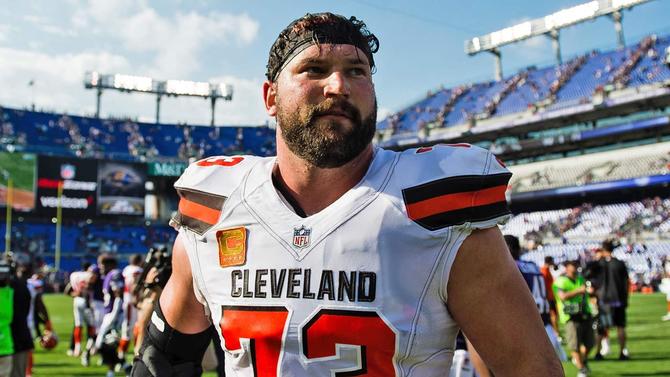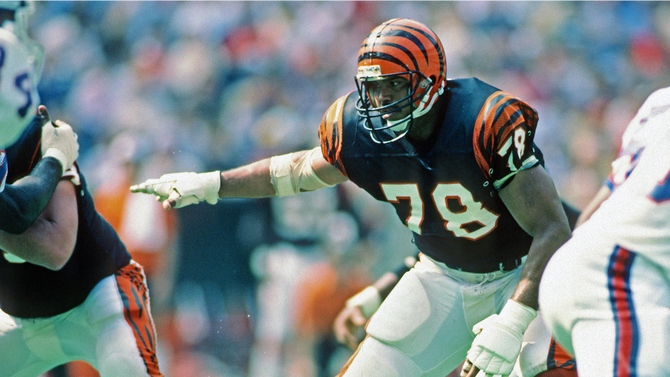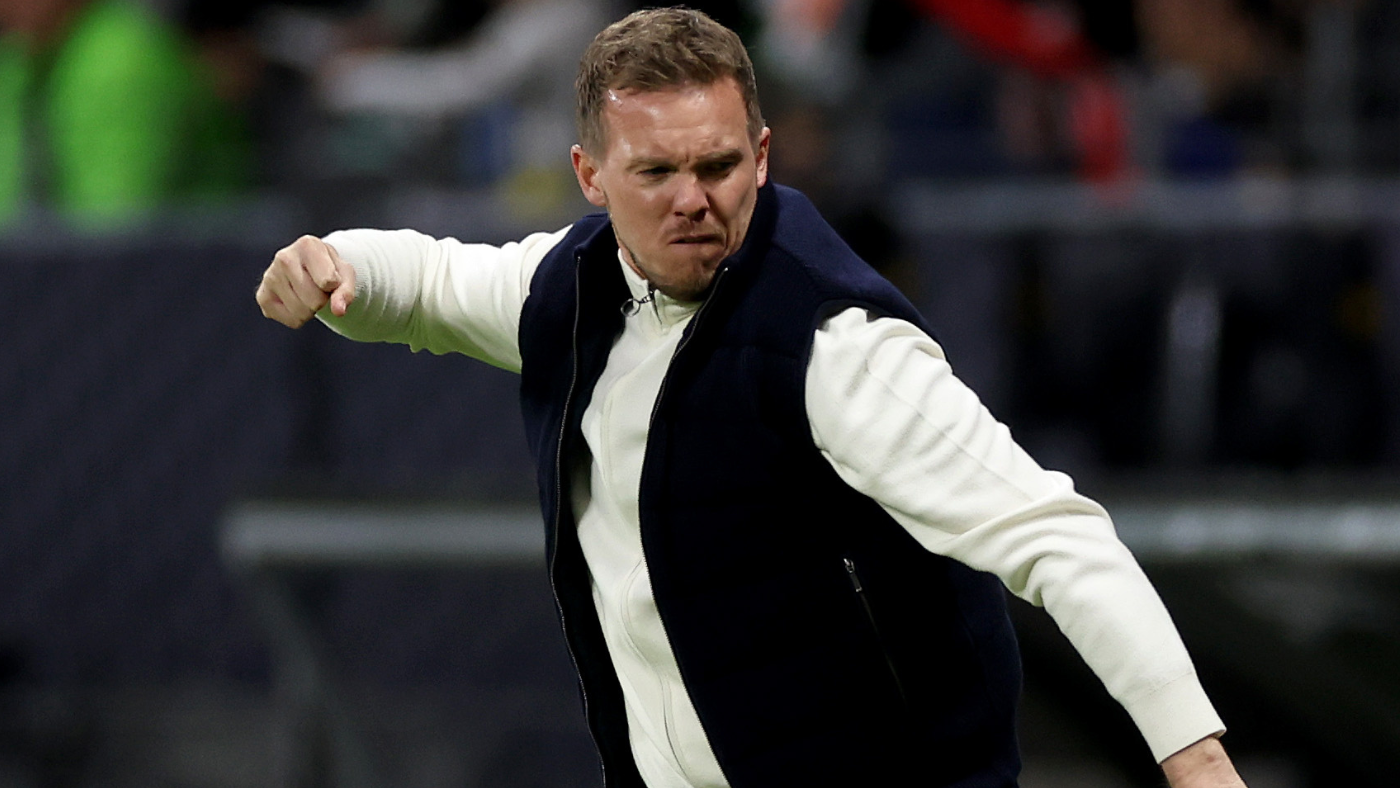The 2022 NFL Draft is mere days away. The team here at CBS Sports is continuing our countdown to when the Jacksonville Jaguars are officially on the clock by ranking the best of the best to ever be selected in the top 32 spots. We’ve now entered the top five, where things get incredibly tough due to the ridiculous volume of excellent players selected at each spot.
Today we’ll be diving into the No. 3 overall selection.
This year, the Houston Texans own the No. 3 pick, and we have absolutely no idea what direction they’ll be going in because we still don’t really know who’s going to be picked at Nos. 1 or 2. Among the likely selections, according to our esteemed mock-drafters, are Georgia edge rusher Travon Walker, Oregon edge rusher Kayvon Thibodeaux, and North Carolina State tackle Ikem Ekwonu.
Please check the opt-in box to acknowledge that you would like to subscribe.
Thanks for signing up!
Keep an eye on your inbox.
Sorry!
There was an error processing your subscription.
There’s always a chance that in a decade or so from now, whichever player is the pick at No. 3 this year can ascend into this top five, but in the meantime (and with apologies to Cortez Kennedy, Charlie Taylor, Cris Carter, and Dick Butkus), here’s who made the cut.
5. Joe Thomas, tackle
2007 NFL Draft: Round 1, No. 3 (Wisconsin)
Team(s): Cleveland Browns (2007-2017)
The aforementioned quartet of players all received serious consideration, but ultimately lost out to Thomas because he was the single best player at the league’s second-most important position for a decade, and they weren’t. Thomas entered the NFL as a phenom, and left it as a legend despite spending his entire career with the saddest-sack franchise in the NFL. He was that good.
Thomas played 11 seasons. In the first 10, he made the Pro Bowl. In six of those 10, he was a First Team All-Pro. In two of them, he was a Second Team All-Pro. He would have been each of those things in Year 11 as well, but his season was cut short by injury. Prior to that, he played and started in 160 of 160 possible games. He holds the unofficial NFL record for consecutive snaps, having played 10,363 in a row before suffering a torn triceps seven games into the 2017 season.
According to Pro Football Focus, Thomas allowed just 30 total sacks and 49 quarterback hits in his 11 NFL seasons. Among qualified tackles, he ranked seventh, eighth, first, seventh, 19th, 11th, sixth, third, third, third, and third in their grading system, indicating that he played at a consistently elite level throughout his career. The only thing working against Thomas is longevity, and as we’ll get into a bit further down, that’s not enough to keep him off the list.
4. Merlin Olsen, defensive tackle
1962 NFL Draft: Round 1, No. 3 (Utah State)
Team(s): Los Angeles Rams (1962-1976)
Olsen entered the NFL in 1962 and immediately emerged as a dominant force on the interior of the Rams defensive line. He remained one until… well, until he retired.
Let’s start with the accomplishments: Olsen played 15 NFL seasons and made the Pro Bowl in the first 14 of them. Those 14 Pro Bowls remain an NFL record, though he shares it with Tom Brady, Peyton Manning, Tony Gonzalez, and Bruce Matthews. (Those four guys all played offense, though, so no defender has ever made more Pro Bowls than Olsen.) He was a First Team All-Pro five times and a Second-Teamer thrice. He made the NFL’s All-1960s Team and All-1970s Team, and was elected to the Hall of Fame in 1982.
Along with Deacon Jones, Rosey Grier, and Lamar Lundy, Olsen was part of The Fearsome Foursome, the great Rams defensive line that terrorized opposing offenses through the 1960s. Butkus at one point called them “the most dominant line in football history,” and they were collectively the subject of a terrific NFL Films documentary. When NFL Films listed the 100 greatest players in NFL history, Olsen himself ranked No. 27 on the list.
Olsen also had a long post-playing career as both a broadcaster and an actor. He worked NBC broadcasts covering the AFC in the 1970s and 1980s (and was the lead commentator on four Super Bowls), then with Dick Stockton at CBS in the early 1990s. He had long-running roles both Little House on the Prairie and Father Murphy, and co-starred in several movies as well.
Olsen passed away in 2010 after a yearlong bout with cancer, but before that he was elected to the California Sports Hall of Fame, and his alma mater (Utah State) named its field in his honor and put a statute of him outside the building. Given his career and far-reaching influence, all of that seems well-deserved.
3. Larry Fitzgerald, wide receiver
2004 NFL Draft: Round 1, No. 3 (Pittsburgh)
Team(s): Arizona Cardinals (2004-2021)
The living legend with perhaps the strongest hands in NFL history is still doing it, though he finally slowed down a bit toward the end of his career. He’s yet to officially retire, but he’s also stated that he won’t return to the field. Fitzgerald ranks second in NFL history with 1,432 career catches and 17,492 receiving yards, and sixth with his 121 receiving touchdowns. His five 100-catch seasons are second all-time, while his nine 1,000-yard seasons are fourth.
Perhaps the most impressive thing about Fitzgerald’s career as a wide receiver, though, is that he basically had two careers and two different receiver positions, and dominated in both roles. Early on, Fitzgerald was a prototypical perimeter wideout who won on contested catches and deep balls and in the red zone. As he got older, he shifted into the slot, where his route-running, physicality, and blocking made him an electric player and extended his prime for several years.
He has the distinction of being the youngest player in NFL history to accomplish several receiving-related feats, largely because he entered the league after just two years of college. He successfully petitioned to have the time he spent at Valley Forge Military Academy counted as being a year spent removed from high school, and so he was allowed to enter the NFL after two dominant seasons at Pitt.
Fitzgerald, like the rest of the players on today’s list, has racked up Pro Bowls (11) and All-Pro appearances (one First Team, two Second Team) and was on an All-Decade Team (2010s). He, too, has played for an incredibly long time with just one franchise. He’s the Cardinals’ all-time leader in basically everything, and probably will be for quite some time. He is going to walk into the team’s Ring of Honor and the Hall of Fame, presumably as soon as he’s eligible, and he’s going to deserve it.
2. Anthony Muñoz, tackle
1980 NFL Draft: Round 1, No. 3 (USC)
Team(s): Cincinnati Bengals (1980-1992)
Muñoz was like the Joe Thomas of the 1980s, but he played for the other Ohio football team. He entered the NFL in 1980, the Bengals plopped him on the blind side of the offensive line, and he just camped out there making Pro Bowls and All-Pro teams for 13 years.
Muñoz played 185 of 208 possible games in his career, all of them at left tackle, where he protected the likes of Ken Anderson and later Boomer Esiason. He was such a dominant athlete that the Bengals often involved him in tackle-eligible plays, and he ended his career with seven receptions and four touchdowns. He went to two Super Bowls with Cincinnati in the 1980s, though the team ultimately came up short against the 49ers in both appearances.
Through his 13-year career, Muñoz made the Pro Bowl 11 times. He was a nine-time First Team All-Pro, which gives him more such selections than all but three players in NFL History. (Jim Otto and Jerry Rice each made it 10 times, while Ron Mix tied Muñoz with nine.) He made two Second Teams as well, and was voted Walter Payton Man of the Year in 1991, NFL Offensive Lineman of the Year in 1981 and 1988 (and the Players Association’s Offensive Lineman of the Year in 1981, 1985, 1988, and 1989), a member of the league’s 75th Anniversary Team, the All-1990s Team, and No. 12 on the NFL’s 100 Greatest Players list. Had it not been for a late-career knee injury, he might have accomplished even more.
Earlier this month, the Bengals announced that Muñoz will be inducted in their inaugural Ring of Honor class, along with Paul Brown. “The organization has had some amazing, amazing players over the 50–plus years of existence,” Muñoz said. “I think this is great because now we get to celebrate all the guys and that’s what it’s all about.”
1. Barry Sanders, running back
1998 NFL Draft: Round 1, No. 3 (Oklahoma State)
Team(s): Detroit Lions (1989-1998)
Arguably the best running back in NFL history, and the “arguably” is only necessary here because he hung up his spikes after just 10 years in the league, at the age of 30.
Sanders was, to put it as simply as possible: impossible. He was impossibly quick, impossibly fast, impossible to tackle. He had impossible vision. He made impossible plays with impossible frequency, and was impossibly efficient both between the tackles and in open space. (This was particularly true given his size, as even by modern running back standards, Sanders was small at around 5-foot-8 and 200 pounds.)
In 10 NFL seasons, Sanders led the league in rushing four times. He led it in rushing touchdowns once, and total touchdowns and yards from scrimmage twice each. He made the Pro Bowl in each of his 10 seasons, and was named a First Team All-Pro in six of them and a Second-Teamer the four times he missed out. He was the Offensive Rookie of the Year in 1989, the Offensive Player of the Year in 1994 and 1997, and the MVP in 1997. He was on the All-1990s Team and the NFL 100 All-Time Team.
At the time he retired, Sanders was second on the NFL’s all-time rushing yardage list, with 15,269 yards. That feat was made all the more incredible by the fact that he is unofficially the NFL’s all-time leader in negative carries, with a total of 1,114 yards lost on those plays. His flashy and electric running style was often contrasted with his nonchalant reaction to his incredible feats, especially when it came to how he celebrated touchdowns. (He simply handed the ball to the referee.)
It’s only through the unfortunate stroke of history that he landed with a franchise that never built a consistent winner around him, and that he experienced only limited playoff football. The Lions won just one playoff game during Sanders’ legendary career, and he’s been open about how that lack of success contributed to his deciding to end his playing career earlier than many expected. Had the Lions managed to do better, it’s possible Sanders could have done so much more.





